Being an Inclusive Ally; a Way of Being
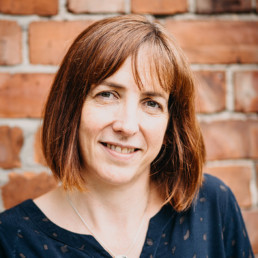
Written by Professor Rachel Lofthouse
Professor of Teacher Education and Director of CollectivED in the Carnegie School of Education at Leeds Beckett University.
An ally is someone who supports under-represented groups and takes action to bring about change. Adrian McLean suggests that inclusive allyship is a ‘way of being’. This strikes a chord with me because at times we use the same phrase about coaching.
A ‘way of being’ means taking an active stance in the world and making conscious decisions about our relationships with others. A ‘way of being’ allows us to transform ourselves, positively influence the lives of others and create fairer, more just and more successful institutions and society. As a ‘way of being’ inclusive allyship alters our thinking and our actions, making what at first is likely to need deliberate work and to sometimes feel uncomfortable, become a non-negotiable part of our identity and positionality.
But what does it mean to be an inclusive ally, what does it require of us and why is it necessary?
These were the underpinning themes of a recent webinar which I was proud to chair. The event was co-hosted by CollectivEd, the Carnegie School of Education and DiverseEd, with panellists Adrian McLean, Bennie Kara, Hannah Wilson and Damien Page. Through their provocations and responses to questions we gained opportunities to explore the theme. The panellists’ contributions blended personal narratives with challenges to participants to reflect on their own roles and actions as allies. Childhoods, school and family experiences, spheres of influence, the need for personal advocacy and opportunities to disrupt and challenge the status quo were discussed. I have taken their words and propositions and threaded them together as my personal way of making meaning of my learning.
Though we have privilege not everyone shares it.
Have intention and be bold.
We can challenge what happens in front of our eyes,
Call out inequality and hand-over the mic.
With commitment we learn.
With energy we act.
With empathy we change.
With power we lever.
Show solidarity and live with discomfort.
If we share the work, it will be done sooner.
Lives will be richer and our society fairer.
Expect equity for all.
Webinar Panellists
Bennie Kara:
Bennie is a deputy head teacher. She is also a professional associate of the Centre for Race, Education and Decoloniality at Carnegie school of Education, Leeds Beckett University. She is the author of ‘Diversity in Schools and a co-founder of #DiverseEd.
Adrian McLean:
Adrian is a MAT leader, and a trustee of Governors for Schools. He is also a speaker, trainer and mentor.
Damien Page:
Damien is Professor of Education and Dean of the Carnegie school of Education, Leeds Beckett University. His research interests include alternative provision and surveillance in education.
Hannah Wilson:
Hannah is a leadership development consultant, and former principal. She is co-founder of #DiverseEd and #WomenEd. Hannah is a CollectivEd Fellow and works in a range of coaching roles.
The Diverse Educators’ Inclusive Allyship Toolkit:
- Video: Yamina Bibi https://www.diverseeducators.co.uk/our-resources/ (Session 3/ October)
- Video: Amy Ferguson https://www.youtube.com/watch?v=yDDDcLKV13E
- Video: Patrick Ottley O’Connor https://www.pscp.tv/w/1ynJOqLYgBEKR
- Blog: Yamina Bibi https://www.diverseeducators.co.uk/inclusive-allyship-2/
- Blog: Hannah Wilson https://www.diverseeducators.co.uk/inclusive-allyship/
How does material deprivation intersect with ethnicity to understand the variations in the achievement among BAME students?
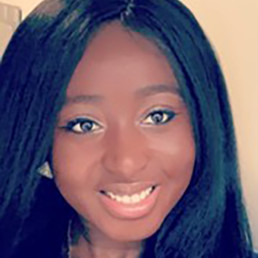
Written by Nicole Edwards
Deputy Curriculum leader for Social Sciences/Aspiring Heads Student 2020-21
This blog will explore the relationship between material deprivation (social class) and the differences in achievement among Black and Minority Ethnic Groups (BAME) within the United Kingdom.
It can be argued that there are differences in achievement on groups classified as BAME. According to a report published by the UK Government (2019) titled ‘GCSE results (Attainment 8)’ highlights that overall, students classified as Chinese or Asian tend to have a high attainment 8 score. For example, on average Chinese students scored 64.3 out of 90 and Asian students scored 51.2 out of 90, whereas students classified as Black, scored on average 44.9 out of 90 (UK Government, 2019). However, there are some significant differences in achievement among students classified as Asian. For example, according to the above report, Indian students tend to have a higher attainment 8 score, of 50.6 out of 90 (UK Government, 2019) compared with that of Pakistani students, who score on average, 46.2 out of 90. Similarly, there are variations in achievement amongst students classified as Black. For example, Black African students on average have a higher attainment 8 score of 47.3 out of 90 compared with Black Caribbean who score on average 39.40 out of 90 (UK Government, 2019).
The material deprivation theory (which links to social class) could be useful in understanding why there are variations in achievement among BAME groups, which could have an impact on life chances. The term ‘material deprivation’ refers to households which are unable to afford basic resources (including educational resources, school uniform, food etc). The term ‘life chances’ coined by sociologist, Weber, refers to the chances that different social groups have of obtaining those things in society regarded as desirable. For example, educational qualifications or of suffering those things regarded as undesirable, such as, low income. According to Guy Palmer (2012) almost 50% of BAME students tend to come from low-income families which can impact their life chances. For example, some may lack the necessary economic capital to access high-quality education. This includes, not being able to afford extra tuition to support with their learning outside of the classroom, computer devices and internet access for online learning. An article written by Jimenez (2020) discusses the impact of the ‘digital divide’ during the COVID-19 pandemic, on ethnic minority students in the UK, highlights that some students from low-income families less likely to have access to the internet, leading to a gap in educational progress.
Furthermore, the intersectional relationship between ethnicity and material deprivation, can be reflected in statistical data on Free school meals (FSM) and achievement. In a report by UK Government (2019) indicates that a number of Pakistani, Bangladeshi, Black African and Caribbean students from low-income families are eligible for FSM. The material deprivation theory can therefore account for the underperformance of some Pakistani, Bangladeshi, Black African/Caribbean students are on FSM, because some of them are unable to afford the necessary academic resources to help them with their studies. As a result, ethnic minorities who are materially deprived and who on FSM tend to make less academic progress than that of students who are not on FSM. As supported by UK Government Report (2019) highlights that pupils on FSM made -0.53 progress, compared with students non-FSM students, who made 0.05 progress on average in 2019. However, not all ethnic minorities who are classified as FSM underperform significantly in education. It is important to note that Chinese students classified as FSM, made an average progress of 0.66 (UK Government, 2019). In addition, the difference between the progress of Chinese students on FSM and Chinese students who are non-FSM tends to be minimal. Therefore, in this instance, it might be worthwhile understanding whether culture, rather than material deprivation, has more of a significant impact the achievement of Chinese students.
In conclusion, this blog has discussed how material deprivation intersects with ethnicity in relation to achievement among some BAME students. It has referred to statistical data on attainment scores of BAME groups, including, Chinese (who tend to have a high attainment score) Asian and Black ethnic groups. Notably, there are variations in achievement within both Asian and Black ethnic groups. The material deprivation theory has proven to be useful in understanding the impact of lack of income and resources upon the achievement of some BAME students.
References
Jiménez, D (2020) The Disproportionate Educational Impact of Covid-19 on BAME students. Available at: https://epigram.org.uk/2020/09/03/the-disproportionate-impact-of-covid-19-in-bame-students/ .
Palmer, G. (2012) The Poverty Site. Available at: www.poverty.ac.uk.
UK Government (2019) GCSE results (‘Attainment 8’). Available at: https://www.ethnicity-facts-figures.service.gov.uk/education-skills-and-training/11-to-16-years-old/gcse-results-attainment-8-for-children-aged-14-to-16-key-stage-4/latest
How do we deal with racism in the classroom?
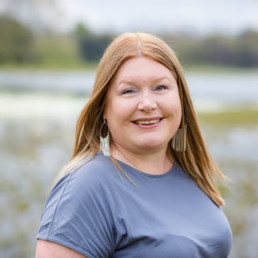
Written by Hannah Wilson
Founder of Diverse Educators
So, what do you do, as a teacher, when a student uses a racial slur against you in the online classroom?
This week I had a disclosure in a NQT training session I was hosting from a trainee teacher. The trainee was a woman of colour. She was distressed as she shared an incident from her week at school and asked for advice. She shared that in a lesson with her Year 10s last week, whilst using the platform Kahoot, one of her students referred to her using the N word. She broke down as she finished her story and turned her camera off to gather herself. The zoom room went quiet. Everyone looked deeply uncomfortable. I watched everyone take a breath and pause to see who would speak first.
One of the facilitators, a woman of colour, unmuted herself and said: “I am sorry. I am really sorry that happened to you”. She went on to share her advice on what the NQT could do. Her co-facilitator, a man of colour, added his advice on how he would handle it if it happened to him. Both gave sound advice, but it struck me that it was centred around what the individual, the victim, should do. It is also struck me that both were talking from a position of lived experience.
As a former teacher trainer, I was aggrieved on her behalf that she had experienced this. As a human being, I was outraged that anyone would think that using a word was acceptable. As a teacher, and a former Headteacher, I was disappointed to hear how the school had handled it. As a white person I was embarrassed and felt sick. Having reported it to her mentor, who had rung her that night to check in, she had been told that they (the school) could not identify the student responsible and she had been advised to send an email (herself!) to the class about the incident.
I was horrified at this response from the school. Why are schools asking the victims of racism to deal with it themselves? Moreover, an early career teacher at that? Why were the SLT not dealing with this racial abuse to show the severity of the situation?
I chipped in and advised that she should escalate it to the SLT responsible for behaviour. That if she did not get a satisfactory response, that she should be escalating it to the Headteacher directly and to consider contacting her union. I DMed her my email address and offered to support in her challenging this failure of the school to protect her. The next day I received an email from her professional tutor assuring me that it had been dealt with internally and that the NQT was being supported the next lesson and that the DHT would be calling each student in the class to identify the culprit.
But the incident has been bothering me ever since… How many other people of colour who have entered our profession are navigating how to deal with prejudice themselves? Who else is being failed by their school and by the system? Who else is feeling isolated, vulnerable and unsupported?
I tweeted out the scenario to see what others thought and how common place this is. You can see the thread with a myriad of responses here.
Below is a summary of the different perspectives on the situation of a teacher being racially abused by a student:
- The teacher should be offered support.
- The student should be offered support.
- The incident needs a full investigation.
- The class should all be asked to write a witness statement.
- The student should receive a Fixed Term Exclusion.
- The student should have a Permanent Exclusion.
- The whole class should be sanctioned.
- The incident should be recorded as a racist incident in the school’s racist log.
- The governing body should be informed.
- The incident should be reported to the LA.
- The next lesson should be replaced with an Anti-Racism workshop for the class.
- The class should be issued with an Anti-Racism contract.
- The parent/ carer should be brought in for a meeting.
- The student should write the teacher a letter of apology.
- The student/ teacher should have a restorative conversation before the next lesson.
- The student should be removed from the class.
- The community police officer should be involved.
- The student should receive an intervention prior to returning to the next lesson.
- The student should sign a behaviour contract on re-entry.
- The online teaching/ behaviour expectations should be reinforced to the class.
- The behaviour policy should be reviewed for how it tackles racism.
- The trainee teacher’s mentor should intervene.
- The SLT should attend the next lesson to speak to the class and re-establish boundaries.
- The year group should have an assembly on prejudice and discrimination.
- The next citizenship / PSHE lesson for the year group should deal with racism.
25 possible and probable actions that should take place to ensure that this member of staff feels safe and is supported, moreover, that another member of staff is not subjected to racial abuse in this school.
But other questions were also raised around the context of the incident:
- Where do we draw the line at explicit and deliberate racism in our school?
- How are ITTE providers preparing trainee teachers to deal with prejudice?
- How are schools supporting NQTs with dealing with discrimination?
- Should schools be using platforms where you cannot identify students?
- Should all lessons be recorded so that incidents can be reviewed?
- Should early career teachers be delivering solo lessons?
- If the N word is in an extract should the teacher say it out loud? Is it ever okay to use the N word if it is in a teaching resource? Does it make a difference if the teacher saying it is a person of colour?
- How is the curriculum being reviewed to tackle prejudice?
- How is the culture of the school being reviewed to educate the students about expectations?
- How has the mentor been trained to support a NQT from a diverse background?
- How have the SLT been trained to deal with racism?
- What is the school’s behaviour policy for prejudice?
There were a lot of comments about attacks based on characteristics being on the increase in our schools, and also in our society. In fact, I have seen several posts on LinkedIn and Twitter this weekend from educators sharing that they have been racially abused at work, but also about people of colour being racially abused in the street.
There were several concerns about the anonymity of online platforms meaning that teaching staff are not protected. Moreover, that there is more room for students to push boundaries. We need to remember that diversity, equity and inclusion work is part of our safeguarding responsibility. Every member of our school community needs to feel physically and psychologically safe.
There is clearly a lot of work for us to do across the system, across the curriculum with both children and staff, around addressing discomfort and intolerance. This incident is indicative of a wider, deeper piece of work that needs to be done. We can sanction the incident in the short term, but how do we prevent it from happening again in the long term?
We all need to be angry at this behaviour no matter what our skin colour. We all need to be part of the solution and take collective responsibility for creating change. We all need to challenge the institutions, the policies and the practices that do not protect people. We all need to speak out, stand up and not only state that this is not okay, but also do something about it by holding others to account.
So, the question should have been: what do you do, as a school, when a student uses a racial slur against a teacher in the online classroom?
What does it mean to belong in our diverse school communities?

Written by Jac Bastian
Has worked at Diversity Role Models for 4 years and has trained thousands of staff members, delivered workshops to students at every phase and created a range of teaching resources on LGBT+ inclusion.
For most of us, diversity is the reality of our schools. We are communities made up of people from a wide range of backgrounds, cultures, religions and so much more. Diversity Role Models’ recent report found that 14% of secondary students surveyed identified as part of the LGBT+ community. This diversity is the reality of school life, but ensuring that students and staff who are LGBT+ feel like they belong in our schools is the challenge we all face. Sadly, our report also found that only 27% of secondary students felt that someone who was LGBT+ would feel safe to come out at their school. If we cannot be ourselves it is hard to feel like we belong.
For nearly 10 years Diversity Role Models have brought LGBT+ and ally role models into classrooms to celebrate our differences, to embed empathy and to help transform school cultures to ensure all students feel like they belong. In primary we focus on celebrating diverse families and in secondary we explore the impact of discrimination and derogatory language. In my four years working with the charity, I’ve had the privilege of seeing first-hand the impact of role model stories on young people in schools across the country.
For me, our workshops have two clear purposes. Firstly, it is to provide positive representation, reassurance and inspiration for any students who may be questioning their sexual orientation or gender identity. To let them know that they can live a happy, successful life being their true self and they deserve to feel like they belong in their school. I’ve had so many students tell me that our workshop was the first time they’d seen someone like themselves represented in their school and we know what a difference that can make.
The second purpose of our workshops is for all the other students who do not identify as part of the LGBT+ community. It is vital that those students understand the role they have in shaping the culture of a school and understand what they can do to ensure others feel like they belong. A personal highlight of mine was hearing two Year 10 boys discussing homophobic language after hearing a powerful personal story on the subject from our role model Alex. One turned to the other and said, “you know when we call James a faggot…maybe that’s not ok!”. It, of course, seems obvious to us that such behaviour is not ok. But allowing students the chance to reflect on the often-unintended impact of such language allowed them the space to reconsider and change their behaviours. At the end of our workshops 84% of secondary students anonymously say they would support a friend who came out as LGBT+. That’s the power of personal stories. If I’d seen even half that number of my classmates say they’d have supported me to come out it would have totally changed my time at school.
One of the key findings of our report was that schools that regularly taught about LGBT+ identities were also the schools in which students said that homophobic, biphobic and transphobic language and bullying was less common. To ensure our LGBT+ students feel like they belong we must embed visibility and actively celebrate the diversity of our school communities. We must embed this in our ethos and values, in our lessons, assemblies, libraries, displays and even in the examples we use. A member of our Student Voice Group once told me that her maths teacher used an example of a same-sex couple in a maths problem and from that moment on she knew there was at least one person at the school she could talk to if she needed. No matter how small, each action we take can make a difference.
To make this easier for teachers we’ve made a series of videos featuring stories from our inspiring role models freely available for this term. With LGBT History Month almost upon us, now is the time to actively embrace this visibility across the curriculum and embed it in the culture of our schools. Our schools are already diverse and it’s time we took the necessary steps to ensure every student feels like they belong.
Nothing to See Here
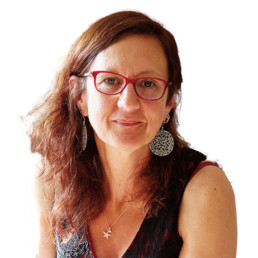
Written by Lena Carter
Writes and speaks extensively on a range of issues related to inclusion and equity.
In December I wrote a post about my achievements in 2020:
https://lenabellina.wordpress.com/2020/12/31/pride-after-a-fall-or-the-highs-and-lows-of-2020/
It was a bit cryptic and I made reference to a new piece of information that I had come upon that had helped me to understand myself a bit better.
I am now in a position to say that the information was a diagnosis of ADHD. At 51 years old, I have finally found some more answers to my life-long feelings of “otherness” and restlessness.
After diagnosis, I wrote a letter to my closest friends explaining what I had found out and shared some of the reasons for me seeking diagnosis:
* the fact that I was very close to burning out, having tried to fit in and keep going over many years in spite of the immense effort of trying to manage and keep a lid on my hyperactivity and poor focus regulation.
* the fact that being 51, peri menopausal and in the middle of a pandemic seems to have massively diminished the efficacy of my coping mechanisms, honed over 5 decades….
* the fact that, after years of soul-searching, talking, writing and trying to fix myself, there was still a part of my jigsaw missing.
If you are interested, this is the best summing up of what I have been living that I have read. The lost girls: ‘Chaotic and curious, women with ADHD all have missed red flags that haunt us’ | Attention deficit hyperactivity disorder | The Guardian
And this has been astonishingly enlightening. https://www.additudemag.com/secrets-of-the-adhd-brain/
Of course, me being me, I immediately thought that I would need to “get on and write a book about it”, or at least add yet another Postscript to my other book to help other people in my situation. But actually, this diagnosis isn’t about me helping other people. Yet, at any rate. It is about me helping me, and accepting help from others, to understand what I can do to improve the quality of my life, albeit at a more advanced age than might have been ideal.
In fact, looking back myself at my book, with the knowledge I now have, I can see that it makes very good sense as a record of an undiagnosed woman with ADHD who was trying to progress along a journey of self-discovery without the right map:
https://open.spotify.com/show/6fYtR94Xjo2HdrK0f2wDIu?si=8xobMQG8ROWp2QelRwso-Q
And as I read this, now, with the benefit of hindsight, I really wonder why a penny didn’t drop sooner: http://www.pedagoo.org/wellbeing-15-16-teacher5adayslowchat-scotedchat/
Fortunately for me and everyone else, I don’t need to write the book in any case as, in a slightly spooky parallel universe way, an amazing woman called Emma Mahony has already written it. I mean, she claims it is about her, a Modern Languages teacher who sought diagnosis at 51, after a life full of incredible achievements but also blighted by constantly being at odds with the world….but she has done a pretty damn good job at writing about my experiences, without ever having met me.
Emma’s book is my new bible, along with a range of other sites she recommends. I would strongly recommend it to anyone with an interest in knowing more. https://www.amazon.co.uk/Better-Late-Than-Never-Understand/dp/1789561949
So, for now, I am not writing a book. I am not trying to save the world. I am not trying to blame everyone else or just keep trying harder. I am learning to accept that my brain doesn’t work in quite the same way as most people’s. I am also coming to understand that, with that, comes challenges but also great possibilities.
I am slowly and cautiously accepting that the Story of My Self from now on is the story of having both a hidden disability and a superpower. Maybe when I feel a bit more at ease with this, I will write more, do more, advocate more. Or maybe not. Maybe I will just live for a bit.
In the meantime, here’s a playlist of songs that help me to make sense of it. https://open.spotify.com/playlist/3Kv3z4a5bBtywBEtL7dWct?si=udMhonMqQdaceOBMUcFb9Q
A Wider Sense of “Normal”

Written by Artemi Sakellariadis
(she, her) Director, Centre for Studies on Inclusive Education (CSIE)
It all started with a quiet, precious family moment on New Year’s Day: father and son snuggled up on the sofa. Savouring the moment, he took a selfie. Then, in the spur of the moment, he improvised a tongue-in-cheek caption and posted it on twitter.
Then something spectacular happened. First a few responses trickled in, then a few more, then literally hundreds of responses poured in, and within a couple of days the BBC wanted an interview. And then, slowly, posts quietened down and the whole thread now rests in the ether, testament to love, inclusion and a powerful counter narrative of difference.
It seems that everyone who posted in that thread shares a common experience and a remarkable secret. “So terrible being the dad of a learning disabled young man” said the original tweet. In response, countless others posted photos of happy moments with disabled family members, with similar comments.
“Yep, it’s awful” said a father pictured with his son, both grinning unreservedly. “Yes, I find it terrible also…” said another, posting a photo of a precious moment. And on it went: family photos brimming with joy were posted with comments such as: “Untold misery”, “Wouldn’t wish it on anyone….”, “So little to feel joyful about”, “Absolutely horrendous”, “Don’t know how we manage”. And all the while, the father who started this thread was responding to posts with more sarcasm, for example: That looks especially unhappy. / I am so sorry for you. / Continuous pain and misery, I can tell. / No love, no intimacy. / Oh that looks grim. Stuck inside all the time [for an outdoor photo] / No fun at all. / That looks absolutely tragic.
If you thought that the common experience is raising a disabled child, this blog post is especially for you. I cannot see what that would be, as every child and every family are different. I was referring to the common experience of dealing with other people’s misconceptions: regularly coming up against widespread assumptions about how terrible it must be to have a disabled child.
“And the remarkable secret?” I hear you ask. You may have guessed. It is the knowledge that raising a disabled child is not a tragedy. It is remarkable precisely because it is a secret, i.e. not widely known (and that is not because those who know it are not saying it, but because those who do not know it are not listening).
Reading through all these posts reminded me of Emily Perl Kingsley’s “Welcome to Holland” (1987), where she likens the experience of having a disabled child to the experience of planning a holiday in one place (Italy) and finding yourself in another (Holland). She describes how initially you might resent the situation, or the place where you are now (Holland, in the holiday analogy), and how difficult it must be to keep hearing everyone else say what a wonderful time they had in the place of your dreams (Italy, in the holiday analogy). Yet, over time, you realise that you are in a different place, which may be slower-paced and less flashy than where you wanted to be, but it also has things to offer which you would not have found in the place of your dream (for example windmills, tulips and Rembrandt in the holiday analogy). And, she concludes, if you spend your life mourning for a dream you have lost, you may not be able to enjoy the existence you have found.
I often wish that more educators would take the journey which Emily Perl Kingsley describes. It would mean that disabled children are better understood and appreciated for who they are, rather than regularly seen as a poorer version of an imagined alternative self without impairments. Educators may not have harboured dreams for children in the way parents usually do, but this journey would help them see disabled children for who they are; not who they are not.
As I have written elsewhere (2012), being different does not make anyone less worthy and we may need to redefine what we consider “normal”. Instead of referring to what is shared by most people – which is better described as “usual” – I suggest that, if we are to use the word “normal” at all, it refers to the full spectrum of human diversity: everything that is a natural expression of our shared humanity.
You do not have to take my word for it. After all, I am neither disabled nor parent to a disabled child. This writing, like all my work, is from the position of a disabled people’s ally. But do, please, visit this twitter thread and hear this message from all these families who have first-hand experience of living with disability. The original tweet has been liked over 23,600 times and retweeted almost 1,500 times. The full thread can be viewed at https://twitter.com/RoseUnwin/status/1345152389079326721.
REFERENCES
Kingsley, E.P. (1987) Welcome To Holland. Available at: www.emilyperlkingsley.com/welcome-to-holland (accessed January 2021).
Sakellariadis, A.I. (2012) A wider sense of normal? Seeking to understand Pierre Rivière through the lens of autism. Emotion, Space and Society, 5 (4): 269–78, special issue on Pierre Rivière.
Breaking the Cycle Anti-Racist Plan: Term 1
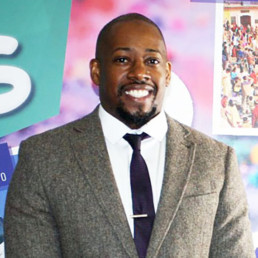
Written by Dwain Brandy
Outstanding teacher, behaviour leader, and Race Equality ambassador. He is on a leadership journey towards becoming a Headteacher.
In 2020, I have had the opportunity to lead an Anti-Racist approach within Oasis Community Learning. The aim was to tackle institutionalised racism in and beyond our schools. Inspired by perceptions of learners, we have introduced a culturally inclusive diet that integrates multiple perspectives to topics within the National Curriculum to make it more inclusive for Global Majority learners and to ensure that whiteness is not the norm by which everything is measured. This will drive the narrative of decolonising the structures in education, focusing on Curriculum Reviews, Staff Training, CPD, Student Education, Community, and Leadership and Management.
With a wide range of different cultural backgrounds and nationalities in England, it is essential for the curriculum to reflect global society and to relate to the increasing global audience. My ethos is to implement a cultural approach that views schools through the perspective of its learners, where the intention is to challenge and change attitudes of society to accommodate an inclusive multicultural community within all schools across the UK.
It has been a challenging start to the school year, due to Covid-19 and limited time capacity to facilitate the project, where the majority of the work was completed outside of the school hours. Despite this, I’m proud to report that significant milestones have been achieved in the first term.
Curriculum Review and Adaptation
To implement an Anti-Racist, anti-oppressive and culturally inclusive diet that integrates multiple perspectives to topics within the National Curriculum to make it more inclusive for Global Majority students
- Audit the cultural diversity of each POS – are each POS representative of different cultures across the five years of study.
- Audit the teaching and learning through an Anti-racist leans using the NEU anti-racist framework
- List of industry professionals , coaches and mentors that could be used for interventions via the list the race trust (launch term 2)
- Initial meeting with Black and Global History trail, in conjunction with the UOM and the Heritage fund. UOM will find local trail blazers for core subjects (Maths, English and Science) with the aim of including these within the lessons. https://www.heritagefund.org.uk/hub/107833/news?page=9
- Review the PSHE curriculum based on the feedback from students
- Anti-Racist training in conjunction with Kids of Colour and resources provided by theracetrust.org and MUSA to provide a framework lessons and a framework for the lessons
- Opportunity to discuss issue relating to race, politics, culture and identity with teaching staff chairing the conversations , addressing any misconceptions
- Diversity day, launching an racist agenda at oasis academy media city (rolled over to term 2)
- Ensure that all cultural events are included in the calendar- for example refugee week, Diwali, Eid, Chinese new year, Wind rush day . Robust plan for Black History Month. Use the OCL equality and diversity calendar as a framework for upcoming events.
- Website, School Newsletters, Photos around the academy, class rooms,
Staff Training and CPD
Staff to become diversity champions, becoming experienced in an anti-racist and anti-oppressive pedagogy
- Build in education of diversity into the yearly CPD programme.
- Deliver a session on being diversity champions as staff
- Anti-Racist Working party group (meeting termly)
- Kids of colour Anti-racist training (Booked in for half term 2)
- MUSA training introduction with all staff (Booked in for half term 2)
- Breaking the cycle anti-racist training launch DBR
Student Education
Targeted interventions for Black and Global majority students
Review the area of concern (e.g. Careers / subject area) that needs intervention.
- Subject specific interventions
- Weekly / Fortnightly 1:1 tutorials with the university of Manchester and Aim Higher for Black students interested in Optometry, Dentistry and Physics. Following students to be allocated a community mentor to hold them accountable (next term)
- Regular meetings with students that have been involved in racist attacks on other students. Far right extremism / anti-racism interventions Small little steps anti-racist training https://smallstepsconsultants.com/
- Follow up Interventions focused on the impact of Hate Crime via The race Trust / Kids of colour
- Student ambassadors. Focused on an anti-racist approach and community cohesion via the race Trust (Next term)
- Student voice (Half Termly Termly)
Leadership and Management
Critically Review existing school policy through the lens of Black and Global Majority Learners
- Racist incidents is 3 days in Internal exclusion that could lead to a Fixed Term Exclusion
- Return to school meeting with parents and SLT
- Incident is referred to the police, social services
- Repeat offenders will be Fixed Term Excluded
- MUSA anti-racist course 6 week course to be completed
- Amended Anti-Racist section in the home school agreement for parents and staff to sign
Community: Term 1
- Weekly meetings with the community strategy response team
- Collaborations with local anti-racist organisations (e.g., Anne Frank Trust, The Race Trust, Kids of Colour)
- Weekly meetings with the community strategy response team (Neighbourhood development officers, Salford Youth Service, Local Agencies focused on online safety , Crime and Anti-Social Behaviour Update from the local PCSO’s)
Next Steps
- Review existing performance management content and include a target aligned with becoming an anti-racist school
- Audit of racial indents sanctions and restorative interventions
- Name Blind recruitment process when appointing of new staff
- Positive discrimination focused on the recruitment of Good/ outstanding BGM practitioners
- BGM representation on the OCL equivalent of the Board of governors
- Clear recruitment to leadership progression for BGM teachers
How to Talk with Children and Young People about Race and Racism

Written by Sarah Soyei
Head of Strategy and Development, EqualiTeach
The murder of George Floyd at the hands of a white police officer and the subsequent protests against systemic racism and oppression will be impacting heavily on children in the UK.
Children will be encountering information via the media, family and friends. There can be a temptation to try to shield them from complex and difficult issues, to turn off the television and shut down conversations. However, even young children will have often absorbed more than adults realise, and older children will be encountering disturbing images and text on social media. All need space to interrogate their thoughts and feelings.
Some tips for talking about race equality and racism are outlined below:
Start from a Young Age
There can be a belief that young people don’t notice difference and that speaking about diversity and race will introduce issues where they had not previously existed. However, in reality, small babies are aware of differences in skin colour and children as young as three start to use racial cues as a basis of categorising people. Talking with young children about diversity will help them to value differences and reject prejudice and develop positive attitudes about themselves and people unlike themselves.
There are lots of lovely board books which introduce the ideas of celebrating difference such as: Everywhere Babies by Susan Meyers, which has beautiful illustrations by Marla Frazee showing babies doing all the things they do best- sleeping, laughing, playing, crawling, and which represents a wide array of different families.
Ensuring that there is a diverse representation of people in books, toys and games, such as dolls, jigsaws and dressing up items introduces children to diversity and creates opportunities for conversation.
Promoting Race Equality is not about being Colour-blind.
Someone’s skin colour is a signifier of their history and a key part of their identity. As Kerry Washington says:
“I’m not interested in living in a world where my race is not a part of who I am. I am interested in living in a world where our races, no matter what they are, don’t define our trajectory in life.”
If adults avoid speaking about difference, then children can erroneously grow up believing that it is rude to mention someone’s skin colour.
Don’t Silence Children’s Questions
Don’t give a negative message by trying to silence children and not answering their questions. Young children are naturally curious about the world and differences between people. If children are told to be quiet and the subject is not something to be talked about, they will draw their own conclusions that being different is somehow embarrassing or shameful. Use questions as an insight into the child’s world and an opportunity to open up conversations.
Talk about Similarities and Differences
Allow children the opportunity to discuss differences between people: skin colours, hair textures, facial features, temperaments and abilities, family structures and relationships, but also focus on similarities. Across ethnicities, countries and cultures there are things we all share: our common humanity, our concern for others, our need to be loved, our need to eat and sleep and play and have a home and clothes – all of which can be different and valued in their different forms. Avoid stereotypes and generalisations; remember there is huge diversity within every ethnicity, country and culture.
Start from Where Young People are
Young people need the opportunity to explore their emotions and learn coping mechanisms. Providing a safe environment to help children talk about issues and understand what is going on will help them navigate any confusion, distress and worries they may be experiencing.
Ask children open questions about what they know, what they’ve seen and what questions they have. This allows you to pitch the conversation at the right level, avoiding over-complicated explanations, which could increase worry and confusion, or pitching it too low and leaving out important issues because you think that children aren’t aware of them.
Avoid exacerbating fears and upset by using graphic images or images of people in distress. If children are focussed on a specific incident or event, broaden the conversation, ask them questions such as ’How do you think the people were feeling?’ and ‘What do you do when you think something is unfair?’. Help them to understand the wider societal context of what is happening to allow them to build empathy and understanding.
Challenge Stereotypes and Prejudice
Sometimes children may say something which is biased or prejudiced. Use open non-judgemental questions, such as ‘What do you mean by that?’ or ‘What makes you say that?’ to find out what they meant by the statement and allow them the opportunity to question what their opinions are based upon. Provide them with an alternative viewpoint and help them to recognise stereotypes and explore the difference between neutral and emotive language, fact and opinion.
Never leave racism unchallenged, use incidents as an opportunity to educate.
Promote Positive Action
Young people can feel helpless in the face of big world issues such as racism, but there is lots that they can do to create positive change, including raising or donating money, challenging racism and raising awareness amongst their peers, sharing content on social media, creating films and blogs, and writing to newspapers and MPs. Young people have a voice and should be empowered to use it.
You Don’t Need to Have all the Answers
Take the time to read and educate yourself as much as possible, but there will always be times where you don’t know the answer to a question. Admitting that you are unsure is a much more positive approach than imparting information which is inaccurate. You can research answers together, which not only ensures that children are receiving accurate information but also teaches them the value of research and how to research for information in a safe and effective way.
A selection of books which provide a platform for discussions on racism are outlined below.
My World, Your World by Melanie Walsh
Age 1-3
A brightly coloured book celebrating the similarities and differences between people.
What’s the Difference? By Doyin Richards
Age 3-5
A book about seeing and celebrating difference and recognising that the most important things are what we can do together as friends, families and communities.
A is for Activist by Innosanto Nagara
Age 3-7
A colourful ABC board-book full of rhymes, and pictures with a cat to find on every page, this book helps to raise children to be conscious of activism, environmental justice, civil rights, LGBTQ rights and more!
Racism and Intolerance by Louise Spilsbury and Hanane Kai
Age 5-8
A beautiful picture book that explores what racism and intolerance are and how they affect children all over the world
Viola Desmond Won’t Be Budged by Jody Nyasha Warner and Richard Rudnicki
Age 5-9
The true story of Viola Desmond who refused to move from her seat in a movie theatre in Nova Scotia in 1946. She was arrested, charged and fined, but continued to fight for equality, inspiring others and raising awareness of the injustice of racial segregation. An important story written and illustrated for young people.
What is Race? Who are Racists? Why Does Skin Colour Matter? And Other Big Questions by Claire Heuchen and Nikesh Shukla
Age 10-13
An accessible exploration of the history of race and society, being. It looks at belonging and identity, the damaging effects of stereotyping, the benefits of positive representation and how to protect against and stop racist behaviour.
A Change is Gonna Come by Various Authors
Age 13+
This book is a collective of stories and poetry from Black, Asian and other Minority Ethnic authors, all on the theme of change. The stories are as diverse as their authors!
The Hate U Give by Angie Thomas
Age 13+
Inspired by the Black Lives Matter movement, this is a powerful and gripping story of a teenage girl’s struggle for justice.
Noughts and Crosses by Malorie Blackman
Age 13+
A series of books exploring race, superiority and love through a world where black people (Crosses) have superiority over white people (Noughts).
“I will not be erased” by gal-dem
Age 13+
gal-dem is an award-winning online and print magazine written by women and non-binary people of colour. “I will not be erased” is a collection of essays from gal-dem writers, using raw material from their teenage years, to share stories of growing up as people of colour.
These books specifically focus on race equality and racism. However, it is vital that this is not the only form in which young people encounter black people in literature. Make sure that children and young people have access to a wide array of literature which includes black histories and stories. Some top tips for building a diverse and inclusive bookshelf:
- Consider the authors: do you have books by a range of authors with different characteristics, backgrounds and experiences?
- Consider the protagonists: are the main characters in your books all white? Do they fulfil stereotypical roles?
- Consider the story: will this story bring something new and different to the child reading it? Will it share a new experience, teach something about a different culture or country, or alternatively will it help to celebrate an important part of their own identity? A great bookshelf will offer all of these!
Some great independent book sellers and online services who stock and recommend a diverse range of books:
Knights Of: a bookshop and movement to support diverse authors
Jacaranda Books: an independent publisher ‘with a dedication to creating space on the bookshelf for diverse ideas and writers.’
Letterbox Library: A children’s booksellers celebrating equality and diversity.
Tamarind Books: Now part of Puffin books, Tamarind has championed diversity in children’s publishing since 1987, helping to make sure children of all cultures and ethnicities have the chance to see themselves in stories and books.
The Willesden Bookshop: Supplies multicultural books for schools and libraries.
EqualiTeach delivers workshops for young people and adult training on all issues of equality including on race and racism. Find out more here or get in touch.
Adapted and Inclusive sport. It’s not just about disability
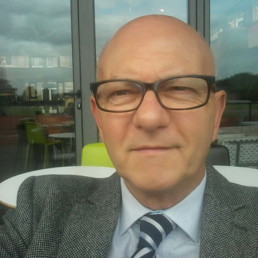
Written by Steve Morley
Inclusion teacher, Activity Alliance Tutor, Author, Educator, Public Speaker, and Mental Health Advocate.
I passionately believe in Inclusion. First and foremost, rather than an assumption that able bodied people do one thing and people with a disability do something else. Inclusion is very much “my thing” and one way I try to achieve it is through sport.
My vision is to see more disabled and able-bodied people playing sport together and my mission is to bring mixed ability events and inclusion to every school sports day.
In conversations with heads of sport from a number of schools, I’ve been discussing how some children find sports challenging. Working in schools my coaches and I use inclusive and adapted activities to encourage children to explore their attitudes about the nature of sport i.e. winning, taking part, competition and having fun. Many of the teaching staff applaud what we do. I often hear comments like, “I think it’s great that you are encouraging disable children into sport”, “Brilliant, disabled youngsters should have the same opportunities as other children”. However, I occasionally hear a remark along the lines of “It’s not really suitable for us since we don’t have any disabled children at our school”.
I believe that adapted and inclusive sport is not just appropriate for traditional models of disability. The definition of Inclusion is – the action or state of including or of being included within a group or structure.
So, what about the “non-disabled” child or young person who is un-coordinated, overweight, too tall, too small, not strong enough, not quick enough, can’t seem to hit the ball, kick the ball, catch the ball? A recent survey about why some people hated sports listed at number five that – it reminded them of childhood trauma. Their argument being that a bad youthful experience with sports affected them permanently.
I’m sure we all know people who dreaded sports days and would have given anything to avoid the PE class. By using adaptive, inventive and inclusive activities we can often engage with children who are not drawn to, or naturally good at, mainstream and traditional sports.
To reiterate my vision, I am seeking to achieve not just more disabled and able bodied people playing sport together but to bring mixed ability events and inclusion to every school sports day; I want all children to experience the joy that taking part in sport can bring, the connections that can be made, the sense of accomplishment and the feeling of being part of something bigger.
Most importantly, I want to take the dread out of sport and by making it “Inclusive”, make it FUN for all!
A Rare Breed: The Lesser-Spotted Black Male Teacher
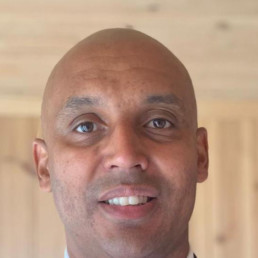
Written by Adrian McLean
Education leader | Former Headteacher | Governors for Schools Trustee | Positive Disruptor
Diversity and equity is something that anyone reading this, I am sure wholeheartedly believes in, visualises and works towards creating in our education system and society. I am an advocate of all of the protected characteristics, and work to challenge the systemic prejudices we all face. My views are through the lens and experiences of a Black male in the English education system. For clarity, when I refer to Black in this blog, I am specifically talking about my Black Caribbean and my government defined White/Black Caribbean heritage. This blog shares some thoughts and musings on why there are so few Black male teachers.
Firstly, we need to examine some statistics to understand how stark the reality is. The latest School Workforce data statistics (2019) show there are approximately 500,000 teachers in England. Using my Black Caribbean descendancy as a marker, the stats say there are 4889 teachers who identified in this category. Using the more accurate descriptor for my background – White/Black Caribbean- this figure comes in at 1741!
When interrogating further, there is no breakdown of how these figures are then represented by gender. What I can tell you from the data provided, is there are approximately 379,000 female teachers compared to 121,000 male teachers. 4889 Black Caribbean teachers… 1740 other White/Black Caribbean teachers… 6630 (quick maths!) people who identified as appearing similar to me, of a population of 500,000 across 23,323 schools? Additionally, that figure represents both male and females! What? Really? I am not a genius, however, it points to the probability of there being very few male Black Caribbean or White/Black Caribbean teachers. Couple this with my 20 year career in West Midlands schools where I have worked alongside less than a handful of males who look like me.
If you have heard me speak, you will have heard me talk about the importance of visible role models to our young people and ‘usualising’ the presence of all people from protected characteristics in positions of authority. Representation matters. It matters to all children! My #DiverseEd Pledge from 14/06/2020 is to continue to help, support and grow the number of Black males (from all denominations of Black) in teaching and Senior Leadership. However, 7 months on, the realisation struck me… are we treating the symptom rather than the cause?
The London Development Agency commissioned a study (2004) on the educational experiences and achievements of Black boys in London schools 2000-2003, the authors of the report called for an increase in the proportion of ‘Black Minority Ethnic teachers within the educational system’. Logically, this makes sense… except right now, this is, in my opinion, a pipedream. Let me explain my theory. The experience of Black Caribbean and White/Black Caribbean male students in school is well documented. We all know about the vast over-representation of these young men in being permanently excluded (latest figures are 0.25 and 0.24%, respectively) are only exceeded by students from a Gypsy Roma background (0.27% which is also a travesty!). To me, it is obvious that the lack of Black Caribbean and White/Black Caribbean males in the profession directly correlates to the negative school experience countless reports and reviews have revealed. It is part of one big negative cycle which drives Black males away from education.
From Bernard Coard’s (1971) study of how the British education system failed Black boys or the government sponsored Rampton Report (1981), which recognised the existence of racism in the British education system, through to the work of Maud Blair (2001), is that a high proportion of Black boys find their educational experience to be negative. All of these studies’ findings were perfectly brought to life in Small Axe: Education by Steve McQueen, where he made the audience feel the very real process of placing Black Caribbean children into special schools because they were disruptive or had not scored well on a ‘I.Q. test’. Education has been doing the same thing for 50 years. I’ll say that again… FIFTY YEARS! Einstein said the definition of insanity is doing the same thing over and over again and expecting different results.
Ofsted (1999) stated Black boys in primary school achieved close to the average on entry to secondary school. However, by the end of year eleven they became amongst the lowest achievers. This mirrors my own experience at secondary school… labelled with low expectations, despite being smarter than your average. Frustratingly, we are still no further along a quarter of a century later! So what changes? Is 11 the age when Black males transform from being capable, engaged students, into troublesome tyrants? Or are other factors at play?
Trying to specifically recruit more Black male teachers is going to be difficult when the school, and education experience is, on the whole, not a pleasant one for this demographic. When I ask my school friends and acquaintances about school, they tell me it was the worst time of their life. They didn’t fit. Told they were trouble. Told they were stupid. Labelled. Written off. Put in their place. They say ‘Why would I want to be anywhere near a system that does that to our people?’ The roles offered in schools to this demographic are stereotypically of a pastoral nature. Roles that often leave you helpless in being able to help those you set out to.
You may ask, well how do we improve the educational experience for these young people? There are many tributaries that are required to come together to form the ocean that is Diversity and Equity. Diversifying the curriculum, real measures being put in place to address socio-economic disadvantage, acknowledgement and extensive work on unconscious bias to address misconceptions of behaviour and attitude issues. Work with our communities around toxic masculinity, a stereotype that is persistently put forward and perpetuated in Black communities. This is not an exclusive list, there are many more tributaries that also flow into the mix.
My Jamaican grandfather would always say “Heel nevah go before toe”, and as usual, his wisdom seems apt in this situation. For us to be able to walk tall and true, we must place the heel first (school experience) before we place the toe (more Black male teachers in the profession). Improve the school experience, the perception of education for Black males will change. Once the perception changes, education becomes an opportunity rather than a threat. The realisation of that opportunity is what I believe will be the change I, and so many others, so passionately work to see.
On that note, I will leave you with 2, some may say rhetorical questions, and a third to ponder more deeply:
Are we trying to treat the symptom rather than the cause?
Do we need to remedy the experience of school for these young people to break the cycle?
How can you be part of influencing this change?
References:
Blair, M. (2001), Why Pick on Me? School Exclusion and Black Youth, Stoke on Trent, Trentham.
Coard, B. (1971), How the West Indian Child is made educationally subnormal in the British school system: the scandal of the Black child in schools in Britain, London, New Beacon for the Caribbean Education and Community Workers Association.
London Development Agency, (2004), The Educational Experiences and Achievements of Black Boys in London Schools, London, LDA.
OfSTED, (1999), Raising the Attainment of Minority Ethnic pupils, London, Ofsted publications.
Rampton, A. (1981), West Indian children in our schools: interim report of the Committee of inquiry into the education of children from ethnic minority groups, London, HMSO.
School Workforce In England, Reporting Year 2019. [online] Available at: <https://explore-education-statistics.service.gov.uk/find-statistics/school-workforce-in-england> [Accessed 16 January 2021].

